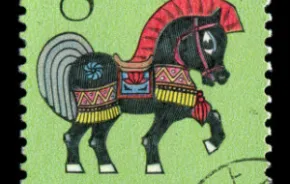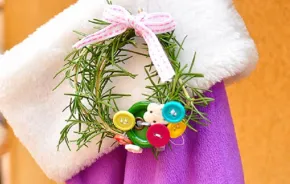
Worm farming, also known as vermicomposting, is the practice of turning food scraps into potting soil via red wigglers. Technically, red wigglers are not the same as the mega-earthworms we usually find in Puget Sound gardens — they are smaller, slimmer, with more gusto for food scraps and are (surprise!) a pretty rosy red color. Also known as redworms, they are a really magnificent magenta, I’d say.
Beloved by fishermen, these protein-packed worms are high-powered compost-producing machines — in ideal conditions, a red wiggler herd can churn through its weight in food scraps in 24 hours. (Of course, kids will have to perfect their worm-farming expertise to get to that level of production.)
Worms live in a dark world on earth time; they don’t need much attention — just food scraps and occasionally some fresh bedding. For optimum worm health, your family should regulate the moisture and temperature of your worm bin — but you can do this by feel or by family science, your choice.
Worm farming for family science
As well as establishing a recycling practice for family-generated green waste, worm farming holds many educational possibilities. From toddlers to teens, kids of all ages can learn a lot from maintaining a red wiggler herd, and worm farming is excellent for family science.
Family science, unlike academic science, has no formal requirements. Modeling a little science methodology at home can go a long way – you don’t need to go into data-collection overdrive, just encourage good note-taking. Family science is a chance for parents and children to explore scientific thinking and creative imagination together. It’s all about the spirit of scientific inquiry. Plus, it’s exciting to set scientific objectives with kids.
Children can also develop good observation skills from worm watching. Sit down with your kids and decide what worm info you’d like to capture. Kids can record when the worms get fed, how much they get fed, the worms’ food preferences, when the bedding is refreshed, the time it takes to get to compost harvest, etc.
How to start a family worm farm
1. Research
Sit down at the computer as a family and look at some vermicomposting resources (see the end of this article for ideas). You might find it helpful to watch instructional composting with worms videos with the kids. Start a family journal to document your worm information.
2. Find the right location
The backyard? The basement? Under the kitchen sink! You have options. Talk it over with the kids. You can have an indoor bin, an outdoor bin or a hybrid indoor-outdoor bin. (Our family worm farm lives in the laundry room.)
3. Assemble the worm bin
Of course you can buy a worm bin with the click of a mouse, but putting together your own starter home for worms is easy, fun and inexpensive. Make a worm bin in a weekend as a family project. Seattle Tilth has free worm bin designs for indoor and outdoor options that your family can put together. And remember, family science does not require sterility, so fancy up your farm with a stenciled motto (“Here lies food for worms.”) or decorate your bin with found finials and kid art.
4. Set up your worm farm equipment
Make sure that you have a container large enough to store food scraps for your worm farm for a couple of days, but small enough for a child to handle. Repurpose old sand toys for the cause. Those adorable tin pails can collect scraps from the kitchen and rainwater from the garden. For indoor bins, it’s nice to have a designated drainage bucket small enough for kids to handle and a pair of old kitchen tongs. For advanced worm-tracking, you may also want a kitchen scale and a thermometer.
5. Bring home the worms
After the set-up — essentially, making sure your bin is ready and full of moist bedding — find your worms. Red wigglers, a.k.a. redworms, can be easily purchased, but you might want to ask around first. You probably have a gardener friend who’d be willing to set your family up with a starter herd. Once you’ve tucked your new herd into their new home, it is absolutely appropriate to have a family feast to generate delicious scraps to give your worms their first meal!
6. Make a plan
Empower your kids to run the worm farm by setting up a care and feeding system that will work for your family’s schedule and your worm herds’ overall health. With a little thought, you can bundle worm-farm chores into your child’s routine. Children can be responsible for collecting food scraps from the table, feeding the worms on schedule and collecting the leaves or shredding the newspaper for bedding. For indoor bins, kids can collect rainwater for when the bedding is too dry and they can manage the “worm tea” bucket. For outdoor bins, children can monitor weather conditions and the bin’s moisture level and temperature.
7. Chart it
Talk about some worm science projects your family can do together. You can chart food worm preferences. (Our herd eschews lemon wedges!) Your family can do worm life sketches and learn worm anatomy. You can do a worm census. (Recording names is optional.) Ask your children what they want to know about their worm farm and then figure out together how to find out that information. One of the greatest gifts we can give our children is the insight to ask and the follow-through to answer life’s questions.
Editor’s note: This article was originally published a few years ago, and updated in April 2020.











